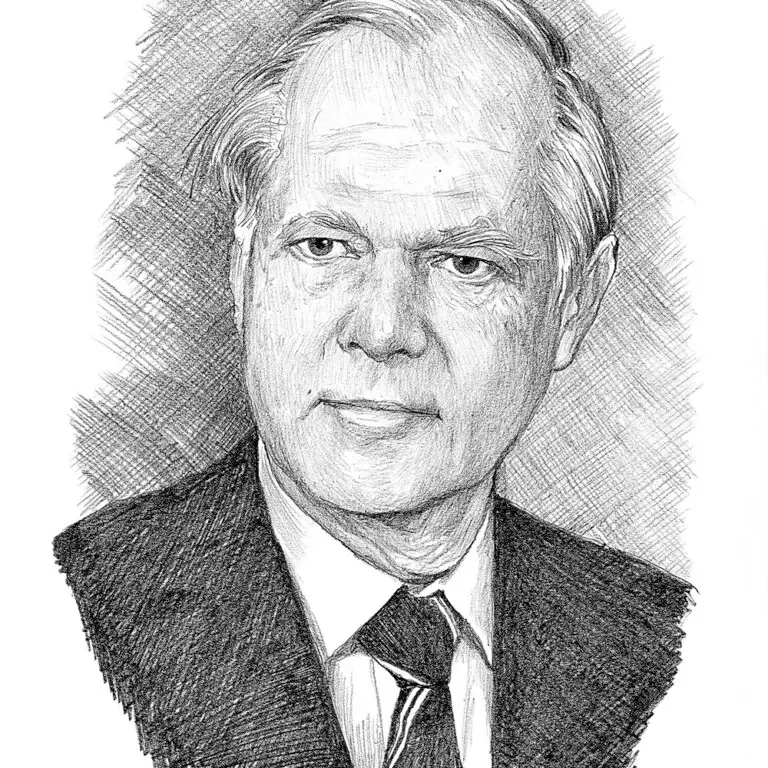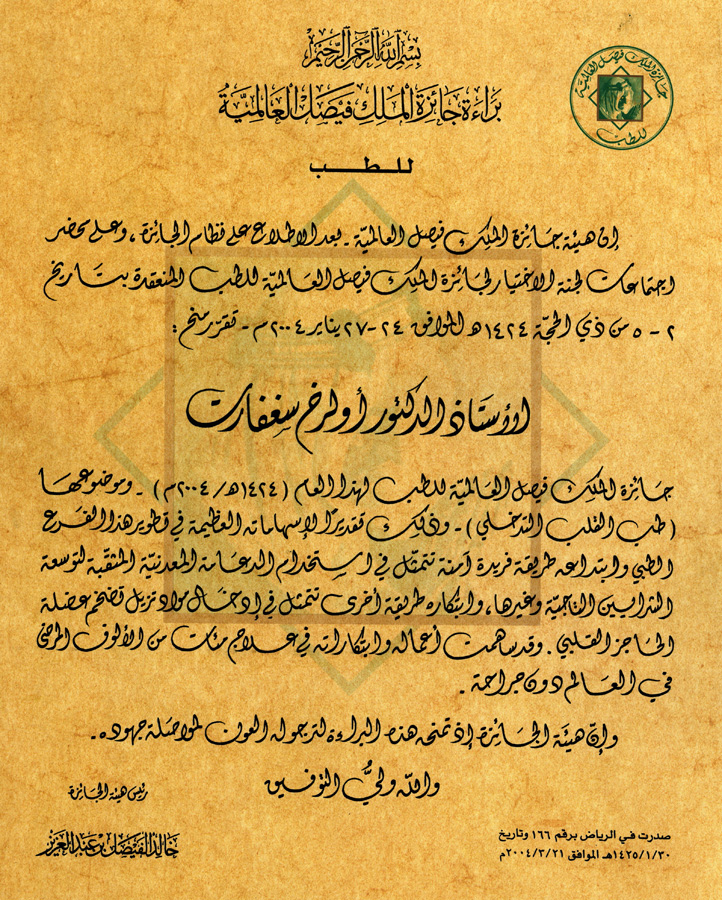

Professor Ulrich Sigwart
King Faisal Prize in Medicine 2004 Laureate
Topic: "Invasive Cardiology"
Medicine plays a unique role in our world of many divisions

Ulrich Sigwart received his medical education in Freiberg, Germany, and in Basel, Switzerland, and completed his residency at Farmington Union Hospital in Boston in 1972, and a fellowship in cardiology at Baylor Medical College in Houston in 1972. He returned to Europe in 1972 for further training at the University Hospital in Zurich and obtained habilitation from Düsseldorf, Germany. He served in different hospitals in the United States and Britain and was Director of the Department of Invasive Cardiology at the Royal Brompton Hospital in London for 12 years before moving to the University of Geneva in 2001, where he became Professor and Chief of the Cardiology Center in the Department of Internal Medicine. He is currently Chair of Cardiology at the University of Geneva, a recognized teacher at the Imperial College of Medicine in London and Professor of Medicine at the University of Düsseldorf.
Professor Sigwart is a pioneer of interventional cardiology. He is credited for conceiving and realizing endoluminal stenting, a non-surgical approach involving the insertion, through a balloon catheter, of a small metal scaffold (stent) into a blocked artery to hold it open. He was the first to successfully place coronary stents into coronary heart disease patients at the University Hospital in Lausanne in 1986. Stenting since then dramatically changed the approach to the treatment of coronary and extra-coronary arterial disease worldwide. Professor Sigwart’s creative spirit had also led him to develop pharmacologic septal ablation, another novel non-surgical technique for percutaneous treatment of patients suffering from hypertrophic obstructive cardiomyopathy – a heart disease which causes abnormal enlargement of the septum that separates the heart ventricles, thus impeding the flow of blood from the heart to the body. In the ablation technique, a pharmacologically induced infarction is selectively produced in the septum to reduce its enlargement, with consequent physiologic and clinical benefits to the patient.
In addition to these major innovations, Professor Sigwart’s work on automation of cardiac catheterization contributed significantly to the current use of computers in haemodynamic evaluation. His sequencing of ischemic heart events was also widely acclaimed, while his fundamental observations on artificial heart valves resulted in significant modifications in their design. He is a prolific author with more than 500 publications and several books to his credit. His book, Handbook of Interventional Cardiology, was translated into Italian and Chinese, and is used as a standard text in many medical schools.
Professor Sigwart’s landmark contributions to the advancement of interventional cardiology were recognized by numerous awards, invited lectures and memberships of learned societies, professional institutions and editorial boards. Among his honors are an honorary doctorate degree from the University of Lausanne in 1999, the European Society of Cardiology Medal in 1996, the Grüntzig Award in 1996, and the Forssman Prize in 2001.
He is a Fellow of the American College of Cardiology, the American College of Angiology, the Royal College of Physicians (UK) and member or honorary member of major cardiology societies around the world.
This biography was written in the year the prize was awarded.
- He was appointed Emeritus Professor at the University of Geneva in 2006.
- He received many awards including:
- European Academy of Science Prize in 2006.
- Maseri-Florio Award of the American College of Cardiology in 2007.
- He founded the Jonas Foundation to help youngsters find new hope and perspective in life, fight social exclusion and violence, and promote cross-cultural dialogue through the arts.


